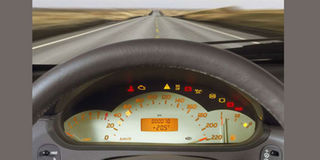For road safety, always drive as if everyone else is drunk

Always drive as if everyone else on the road is drunk. PHOTO | FOTOSEARCH
What you need to know:
- “Defensive Driving” added no new protocol to what should have been, and still should be, universal knowledge of motorists.
- What it perhaps usefully did was emphasise and prioritise that, alongside good knowledge of the rules and standard processes of driving, safety demanded a state of mind, an attitude, that was aware of and ready for human error.
Fifty-four years ago, the world invented a new road safety concept. It was called “Defensive Driving”.
Not a very catchy title, but not a bad idea and for a while it became a popular buzzword to the extent that even today most people will recognise the phrase. There were (and probably still are) defensive driving courses, worldwide, well subscribed.
The idea was promoted as “a form of training that goes beyond mere mastery of the rules of the road and the basic mechanics of controlling a vehicle.”
The purpose was defined as “driving to save lives, time and money, in spite of the conditions around you and the actions of others”. The concept offered slogans like “assured distance ahead” and the “two-second rule”. It advocated speed control, alertness, avoiding distractions, anticipation, expecting the unexpected, watchfulness and respect for others, leaving a gap, adjusting for road and weather conditions, and process-planning before, rather than during, manoeuvres.
Now these may sound like revelations to some of our road users, but they are in fact the basics of any decent learner-driver tuition and any meaningful competency test. They were nothing more than that even 54 years ago, and driver training and testing (in many places) have advanced enormously since then.
“Defensive Driving” added no new protocol to what should have been, and still should be, universal knowledge of anybody, anywhere, with hands on a steering wheel and a licence in the pocket.
What it perhaps usefully did was emphasise and prioritise that, alongside good knowledge of the rules and standard processes of driving, safety demanded a state of mind, an attitude, that was aware of and ready for human error. Amid all the yawn-inducing repetition of the elementary and obvious, the courses did urge drivers to adjust their own driving, at all times, to be ready for the mistakes of others, at any time.
The lessons did focus on anticipating and avoiding the consequences of others’ mistakes, rather than angry beeping of horns and shaking of fists. That’s why they called it “defensive” driving. Sadly, in some traffic systems, that is a very ambiguous invocation. Indeed, “defending” yourself against road rudeness is well on the way to the “road rage” — the very opposite of the “avoid danger” and “steer clear of trouble” message that Defensive Driving wanted to preach.
Neither the inventors nor the tutors solved this misunderstanding. But some of their students did, with: “Always drive as if everyone else on the road is drunk”. That tells you, instantly, what awareness and attitude Defensive Driving was trying to advocate. And that is very, very good advice. It was then, and it is now.





